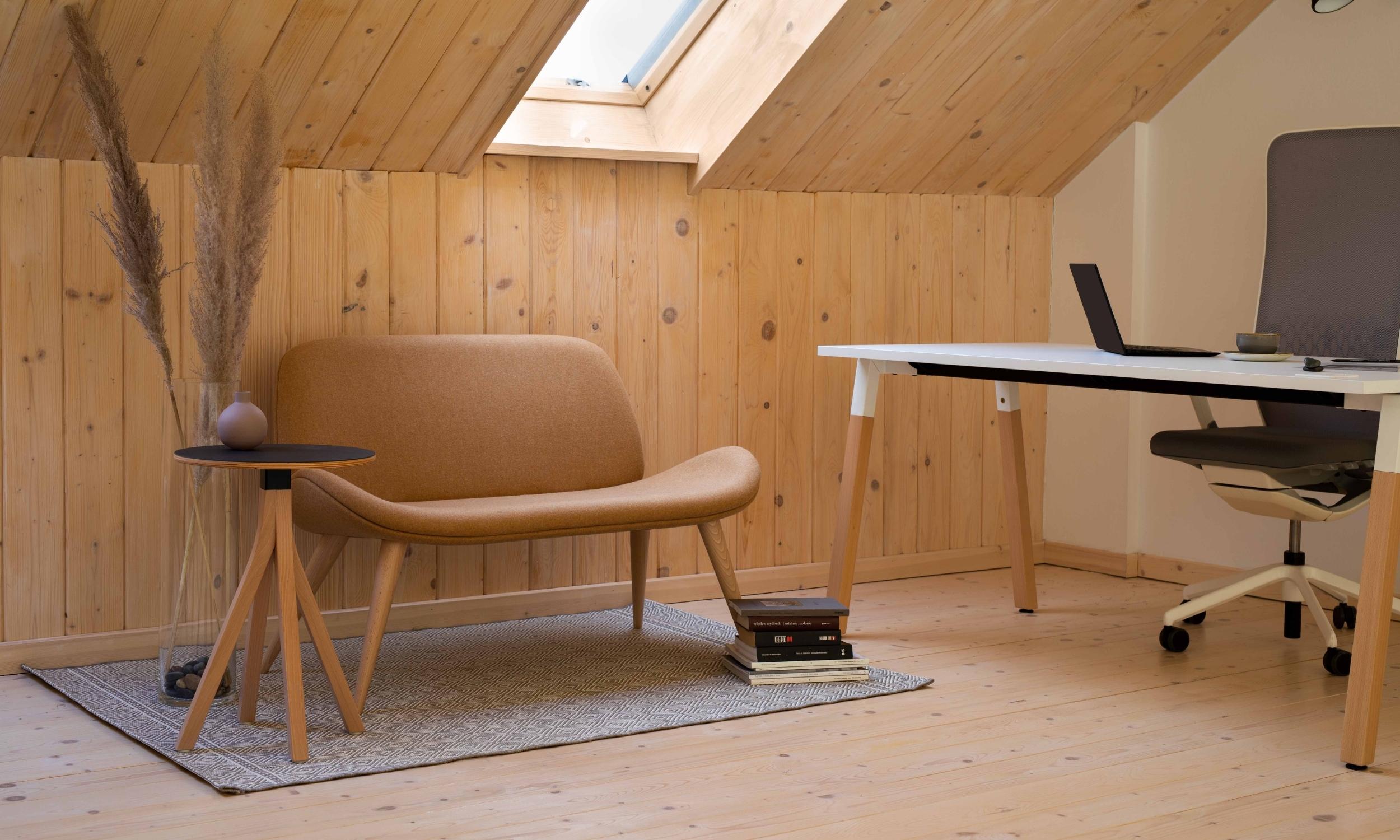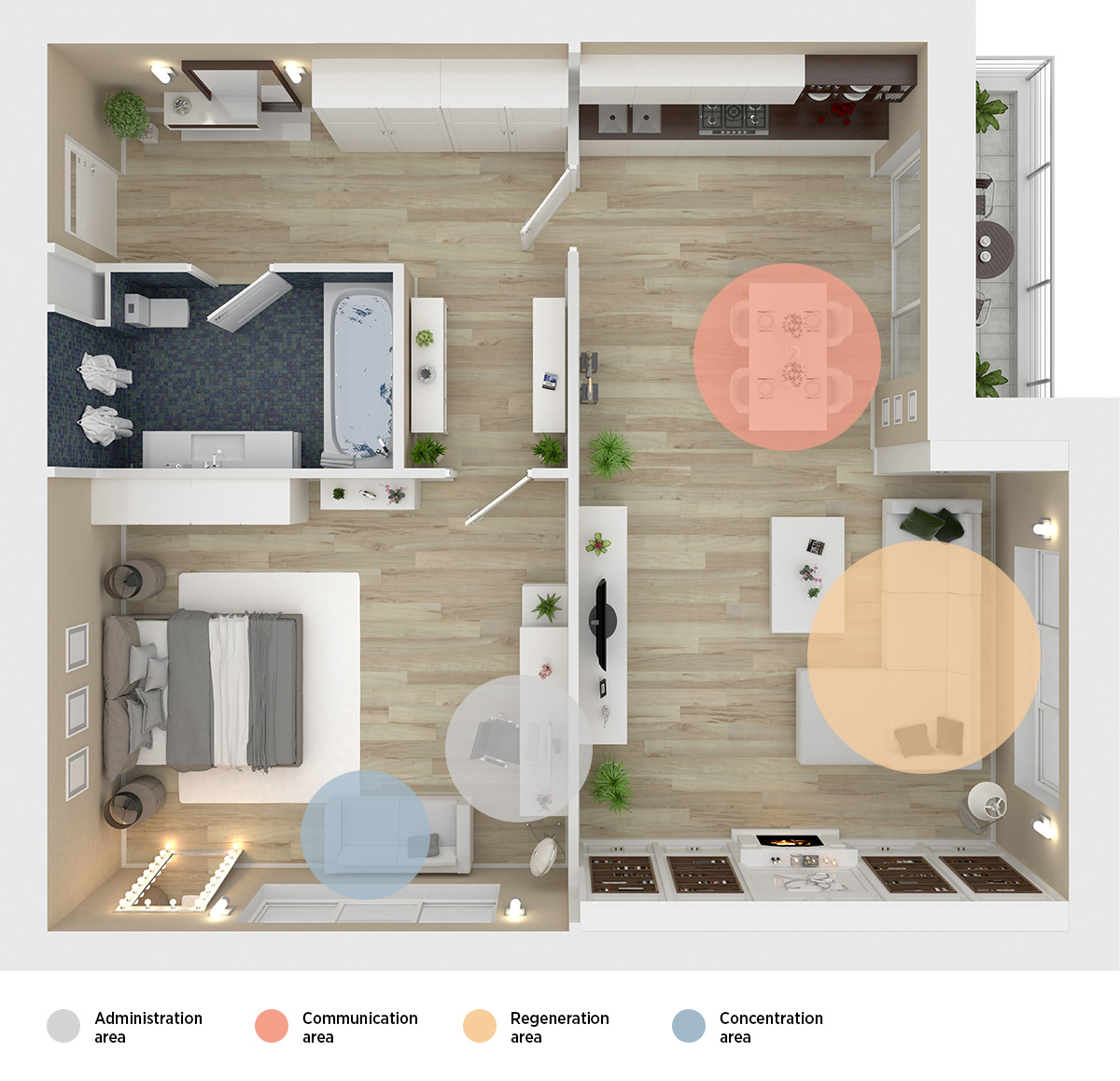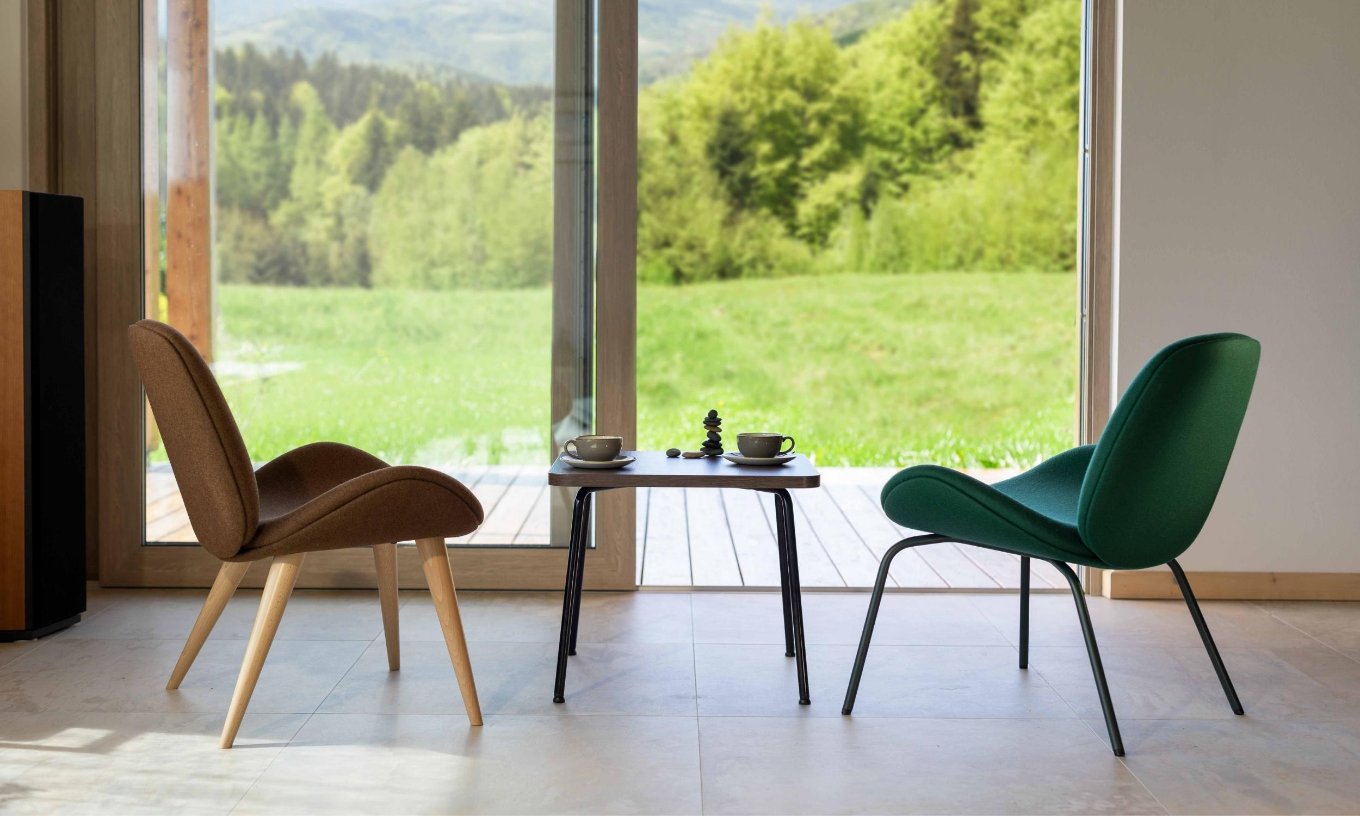#MakeYourSpaceAtHome - a few tips for a good manager
The current situation has come as a surprise to everybody, regardless of their social position or job. This is definitely a time of difficult choices and decisions. A time when many obvious concepts will have to be redefined.
In our everyday practice we try to support you in creating and implementing effective office spaces. We would like to stand by you also in this extraordinary situation – by sharing and offering all the help we can when our home often becomes our office. Are your homes ready for it? How do you achieve work-life balance if you remain confined to one space all day long?
And how do you manage the work of your employees, who are also working from home? How do you make the time spent in your home office highly productive?
We will provide answers to all of these questions in our cycle #MakeYourSpaceAtHome: business edition, which you are currently looking at.
Ergonomic work environment at home – what does your team need?
It is always good to take care of your health, e.g. by focusing on proper body posture, regulating your workstation or observing workplace hygiene. Following these rules in the office, where everybody has access to a proper chair, laptop pad etc., may be boring, but at least it’s doable. Problems appear when you have no access to the relevant equipment, because all of your team is forced to work from home.
As a manager you are responsible not only for yourself, but also for other employees. Ask them if they are fine, if there is anything they need. Maybe you can help them arrange a proper workstation at home for this occasion, which might last a bit longer? Sometimes offering a few proven pieces of advice, like those below, will show your team that you care and are willing to support them. This is something we need not only in times of crisis.
I don’t have my own office
What do you do if you don’t have a suitable room to work in, with a PC, regulated chair and a well-lit desk? You will have to improvise. A critical situation calls for all the creativity you can muster. We have collected a few of such “makeshift” ideas to give you some inspiration. We should remember, however, that none of these solutions will guarantee the comfort and ergonomic quality that come with a proper chair and regulated desk.
In order to cope with the situation for the time being, it is good to define the space you are going to work in. It could be a dining room table and a regular chair. When you sit, try to keep your knees at an angle of ca. 90°. Your elbows should also be at the right angle after you put your forearms on the table. Sometimes you have to sit on a folded blanket or two to achieve this. You can also use a footrest (it could be e.g. a shoebox). If something works, don’t be afraid to share it!
Another aspect is the position of the computer screen: its upper edge should be right below the line of sight. If the laptop is on the table and the upper edge of the screen is too low, try putting a few books underneath. If the back of your chair does not support your spine, i.e. if your lumbar spine does not rest against the back of the chair – place a cushion so that your lower back is supported. This will help you avoid back pain.
Sitting is not the end of the story
Once you have created a comfortable makeshift workplace, it’s time to stand up. If you spend a lot of time sitting, it’s not good for you even if the position you choose is most ergonomic. Your muscles stiffen, pressure on the veins causes ischaemia, and lack of exercise accounts for low oxygen supply. It’s time for a coffee break! Or maybe you have access to a high windowsill or a kitchen island - a place where you could work in a standing position? Use it! This will not replace a professional desk and office chair, but won’t do you any harm, either. You can also make a tour around your flat while you talk to your team members on the phone. This also counts as exercise!
You should change your position following the 50/25/25 model: during one hour you spend 50% of the time sitting down, 25% standing and the other 25% in motion. You could also do some exercise to relax your muscle tension, help you get rid of stiffness and provide your brain with an extra dose of oxygen. This is where you can find some sample exercises and an instructions – share them with your team.

Working zone vs chill-out zone. Activity Based Working in your home office
Form good habits and rituals
As a manager you are partially responsible for managing the time of your employees. Try to make your work at home resemble your office routine. Get up at roughly the same time; remember what time you start to work, so that you know when to finish. It’s good to inform your team about it, so that they know when you’re available. Share this rule with everybody, so that you all respect one another’s working hours and try to make the most of it.
Reliable work-life balance
While you work from home, it’s easy to disrupt work-life balance. In this situation, healthy and balanced lifestyle is of utmost importance, because it boosts your immunity and the ability to cope with stress. When you’re in home office, it’s easy to forget about it. We often work longer hours: sometimes we want to wind up certain projects, or to show our superiors that although we’re at home, we are doing our job rather than wasting time. We also feel we have more of the latter, because we don’t have to commute. We sometimes procrastinate, so that our duties take up all day, because every time we get distracted, we feel the need to make up for the lost time. If your team loses their work-life balance, remind them how important it is; although they might be working shorter hours, their effectiveness will in fact increase. Activity based working. Get up and go, also at home
A lot has recently been said about diverse work-related activities, office zoning and doing specific tasks in relevant places. It is no longer surprising that you discuss projects in a meeting room, you hold telephone conversations in a special booth and you eat lunch in the kitchen rather than at your desk.When you transfer Activity Based Working principles to your home office, you will soon feel the difference, especially if this is the first time you ever experience the benefits of zoning. There is a lot of practice and psychology to support this concept. It’s much easier to focus on specific activities if you realise and remember that you normally do them in specific places. This is why it is important not to work while you’re in bed, because this will impact both your work and the quality of your sleep.
We know that the advice we provided will not solve all of the problems you and your team may be facing in your everyday home-office setting. Still, we believe that these tips may make your life easier and help you organise your work, so that you can be the beginning of a greater, better change for yourself and your team

What can you do for your employees while they work from home?
Although formerly a luxury, Home Office has now become a necessity. The longer we practise it, the better we understand the challenges it poses. Who knows, maybe it will soon become a rule rather than an exception? Rather than requesting one day at home, your employee will ask: “Could I possibly come to the office today”? This difficult time proves we are in fact social animals. It’s much better to have your morning coffee with colleagues than all alone at home or in the middle of a domestic.
Recent recommendations are clear – don’t go anywhere unless you have to. If this is also the case with your office, it’s good to stop and think whether your team is well equipped to work from home.
Basic tools
A laptop itself is not enough to guarantee effective work from home. Without appropriate tools you will soon be lost in a sea of e-mails and job statuses, and at the end of the day you will go to sleep aching, because you’ve been sitting in an awkward position. The same goes for your employees.
In order to avoid such problems, try to think of relevant software to facilitate ongoing communication with people from your department. Ideally, your employees should have the opportunity to get used to conference calls or video conference tools. You have a wide range of online solutions at your disposal. They will not replace live meetings, but right now they are a good alternative. After all, working from home proves that you can discuss relevant issues quickly and effectively, without meetings that keep dragging on.
Another thing is a tool for monitoring the teamwork while you’re out of office. This will help you avoid dozens of e-mails in order to check the progress of individual projects. Mind you, this is not about being a control freak and keeping an eye on your employees all the time. Remember, these tools are supposed to facilitate your work rather than promote constant control. Your employees will feel better when they know you trust them. Most of them will also appreciate the opportunity to keep track of their projects.
While working from home you mustn’t forget about those tools that help you organise an ergonomic work station. These tools affect the attention span: this is the time when your employees can truly focus on their work. Another thing is how often they have to take a break, e.g. because they are working on an uncomfortable sofa. A fully functional mouse, a quick laptop, a comfortable chair or a regulated desk – all of these affect the everyday efficiency of your team.
Some companies support their employees in home-office arrangement. They invest in ergonomic furniture – chairs and special desks, such as sit-to-stand models. The latter can be useful not only to the employee, but to the whole family – even kids can use a regulated desk like this. Of course, it all depends on individual capacity: many companies simply cannot afford to make such investments at the moment. Nevertheless, you can be sure that even the tiniest gesture will be appreciated by employees, be it now or in the future.
What else can you do to help?
Many people do not have a separate room they can arrange as their home office. Sometimes it can result in funny situations – some people reply to e-mails while cooking dinner and nursing a crying baby, others try to convince older kids to do their homework instead of playing computer games… Home can be a battlefield – it’s really hard to remain effective in these circumstances. If you have to cope with this issue as a manager, you will probably want to check out the previous part of this cycle, where we included a few tips on how to divide your home space into specific zones and help your employees in their home-office arrangement. It is also a good idea to remind your team of everyday exercise and changing your position while you work.
For many of us this situation is a complete novelty. Some people experience fear when they think of the future. It’s hard to say what life will be like after the pandemics. And yet it is the usual everyday care, trust and empathy that build our mental resilience and motivation to work. Show your team that you care. Maybe you will soon meet again in the office and have coffee together!
Managing a dispersed team in times of uncertainty
Previous good leadership models are often insufficient when the situation is changing dynamically from week to week and we start to long for normal contact with other people.
How do you cope with it? What is the first thing you should bear in mind? How to take care of yourself, in order to be able to support your team?
We would like to invite you to watch a few brief tutorials prepared by our HR Team and presented by our Trainer and Managing Consultant – Andrzej Butra.
